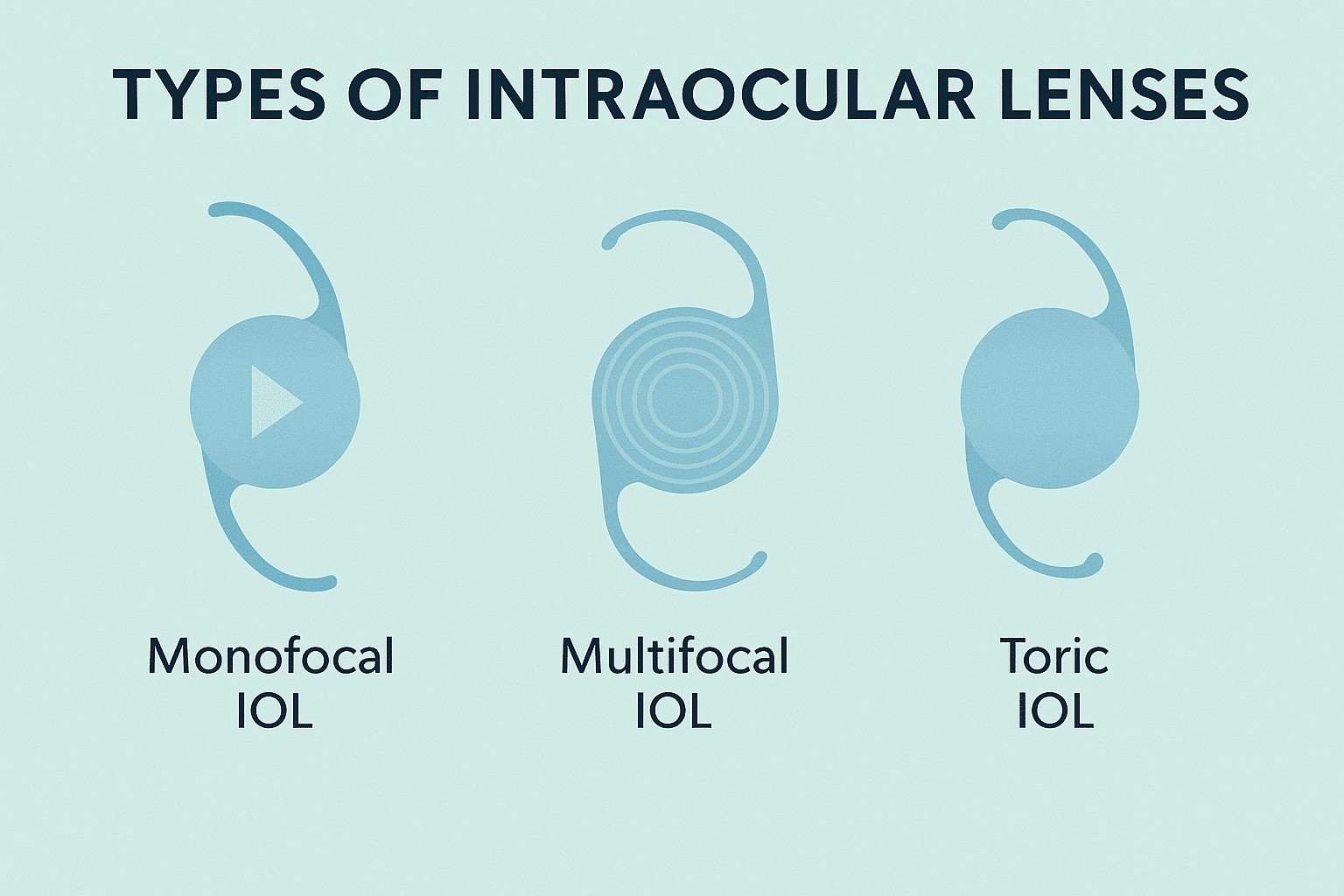Can’t track your golf ball in flight? Having trouble reading those tricky green slopes? You’re not alone. Cataract Surgery for Golfers has helped boost their game. Cataracts can really mess with your golf performance. They affect your depth perception and make those delicate shots around the green or bunker shots extra tough.
Premium IOLs give you crystal-clear distance vision – exactly what you need on the golf course. These advanced intraocular lenses work great if you need sharp vision at different distances. The recovery time is surprisingly quick. You’ll be back on the course in just a few days after modern cataract surgery. Golfers tell us they play better and enjoy the game more after getting this surgery. Love golf? A chat with your eye specialist about premium lens options could help you play better golf.

The visual challenges golfers face with cataracts
Many golfers don’t notice right away how cataracts mess with their game. These cloudy spots in your eye’s lens grow slowly. They chip away at the sharp vision you need to play golf well.
Blurry vision and lost balls
Golfers with cataracts face a big challenge – they can’t keep track of the ball after teeing off. Players often say they just can’t follow where their shots go. This gets worse on cloudy days when everything looks flat. Your lens turns yellowish with cataracts, making it tough to spot a tiny white ball against clouds or sky. You’ll also have trouble with those tricky chips near the green because cataracts mess with your depth perception.
Struggles with reading scorecards
Your eyes will get tired from switching between looking far away for shots and up close to write down scores. A 58-year-old who’s played golf his whole life said switching glasses threw off his whole game. Players with cataracts often deal with presbyopia too, so reading scorecards, yardage markers and signs becomes a real pain.
Sun glare and contrast issues
Glare sensitivity hits cataract patients hard – that’s rough on sunny golf courses. Bright sun bouncing off water or morning dew can leave you temporarily blind. You’ll also lose your ability to see contrast clearly. This makes it hard to read those subtle slopes on putting greens or find your ball in similar-coloured grass. Most golfers first notice something’s wrong when they walk between sunny and shaded parts of the course.
Impact on confidence and enjoyment
Poor vision affects more than just your score. Seasoned golfers say they lose confidence in their swing when they can’t see well. Nobody likes asking their buddies to help find their ball all the time – it gets embarrassing. Golf should be fun and social, but cataracts can make it stressful. Many players end up limiting their game as their vision gets worse.
How cataract surgery can improve your game
Cataract surgery can transform your golf game by giving you amazing vision improvements. Golfers see big improvements in their game soon after recovery. Many describe their post-surgery vision as “like upgrading to HD”.

Restoring clarity and depth perception
Your visual acuity gets restored after cataract surgery, which lets you judge distances more precisely. This improved depth perception helps you hit the ball with just the right force – a vital part of gauging the distance between your ball and the hole. The surgery removes your cloudy, cataract-diseased lens and puts in a clear intraocular lens (IOL). This gives you the perfect vision you need for those long drives, short putts, and everything in between.
Improved contrast for better ball tracking
The surgery’s biggest benefits include better contrast sensitivity. You’ll find it much easier to track your ball’s flight, even when it’s overcast. Many golfers lose sight of their ball in flight before surgery, especially on cloudy days. Colours become more vibrant after the procedure, making your ball stand out against leaves or rough terrain.
Freedom from glasses on the course
Clear vision means better performance for golfers. Our premium intraocular lenses at Precision Vision London restore distance precision and colour contrast. This helps you read greens and track drives with clarity.
Premium IOLs in modern cataract surgery can free you from needing visual aids. About 80% of people manage well without glasses for distance activities after surgery. You won’t need to fumble with reading glasses to record scores or deal with prescription sunglasses that limit your vision.
Faster reaction times and better focus
Your visual reaction time improves after cataract surgery. Clearer vision helps your brain process and react to visual information faster – a big advantage for perfect swing timing. Light transitions become easier too. Early morning tee times or foggy days won’t challenge your vision anymore. Today’s premium IOLs are made to improve your sight in almost any lighting condition.
Comparing premium lenses for golfers
Your performance on the golf course depends heavily on picking the right intraocular lens after a cataract diagnosis. Different lens types work better based on your vision needs and how you play the game.

Monofocal vs Multifocal: What suits your game?
Monofocal lenses give you sharp vision at one set distance usually far away. These lenses help you track long drives and spot flags across the fairway. You’ll need reading glasses for scorecards though. Multifocal lenses let you see clearly at different distances without switching glasses.
Toric lenses for golfers with astigmatism
Toric IOLs fix both cataracts and astigmatism at once if your putting alignment or ball tracking suffers from astigmatism. Regular glasses or contacts often mess up depth perception and ground views for golfers with astigmatism. Toric implants give you steady, reliable vision throughout your swing.
EDOF lenses for intermediate and distance clarity
Extended Depth of Focus lenses create clear vision from middle to far distances. These lenses help you see the ball at your feet and the flag far away. EDOF options give you better depth perception and less glare than multifocal lenses. This matters when light conditions change during play.
Synergy and PanOptix: Full-range vision options
Studies show that both Synergy and PanOptix trifocal lenses give excellent vision at all distances. PanOptix’s design cuts down on annoying visual problems like starbursts and glare. This means you can play better during early morning or evening rounds.
Why choose Precision Vision London for your surgery
A perfect mix of expertise and technology at your cataract surgery clinic can make a big difference in how fast you get back to the golf course. Precision Vision London gives golfers special advantages to rejuvenate their vision and step up their game.
Expert surgeons with sports vision experience
World-class corneal and refractive specialist Dr. CT Pillai leads Precision Vision London as Medical Director with over 30 years of leading experience in ophthalmology. This surgeon-led practise understands what golfers need from their vision, unlike regular clinics. The clinical team knows how to treat athletes and can suggest procedures that boost distance vision and contrast sensitivity to track golf balls better.
State-of-the-art lens technology
Precision Vision stands out because it has access to the most advanced lens technology. The clinic isn’t tied to specific manufacturers, so you’ll get the best lens for your golf game instead of a standard solution. Their complete range has premium options like EDOF lenses that give golfers excellent distance and intermediate vision without glare.
Tailored care for active lifestyles
Precision Vision London creates a truly custom treatment plan that matches your vision needs and active lifestyle. Your consultation gives you full testing and a personal treatment plan based on your specific golfing needs. Book your cataract consultation today and bring crystal-clear focus back to your long game.
Trusted by patients across London
The clinic boasts an outstanding 4.97/5 rating from 166 Doctify reviews. Patients love their results and the exceptional care they receive throughout their treatment. Golfers especially appreciate getting 20/20 vision and personal attention that helps them return to the course with confidence.
Conclusion
Don’t let cataracts stop you from enjoying golf or losing your competitive edge. Premium intraocular lenses are a game-changing solution that helps golfers who don’t deal very well with visual challenges on the course. After surgery, you’ll see remarkable improvements in tracking ball flight, reading greens, and judging distances – everything you need for a confident golf swing.
Choosing the right lens will affect your post-surgery results substantially. Your visual needs and golfing habits should guide this crucial decision. Monofocal lenses work best for players who focus on distance vision, while toric options fix astigmatism that affects putting alignment. EDOF lenses give you excellent intermediate and distance clarity, especially when you need to assess shot distances across the fairway.
Precision Vision London’s combination of surgical excellence and personalised care sets them apart for active lifestyles. Dr. CT Pillai’s vast experience with athletes means you’ll get treatment that meets golf’s unique visual demands. The clinic uses advanced lens technology to give you the best solution for your specific needs instead of a one-size-fits-all approach.
Modern cataract surgery has a surprisingly quick recovery. Most golfers get back to the course within days. Full visual adaptation takes a bit longer as your brain adjusts to your improved vision. The long-term benefits go way beyond better scorecards. Patients often tell us about their renewed confidence and greater enjoyment of the game.
A detailed consultation at Precision Vision London starts your path to clearer vision. Their expert team will review your visual needs and show how premium lenses can boost your golfing experience. The outstanding patient reviews and remarkable 20/20 vision results definitely show the quality of care you’ll receive. Book your consultation today to take your first step toward sharper vision and lower scores on the golf course.
Key Takeaways
Discover how premium cataract surgery can transform your golf game by restoring crystal-clear vision and eliminating the visual challenges that impact your performance on the course.
- Cataracts significantly impair golf performance by causing blurry vision, glare sensitivity, and difficulty tracking ball flight, especially in varying light conditions.
- Premium IOLs restore sharp distance vision, enhanced contrast sensitivity, and depth perception crucial for accurate shot-making and green reading.
- Different lens types serve specific needs: monofocal for distance clarity, toric for astigmatism correction, and EDOF for intermediate-to-distance vision.
- Modern cataract surgery offers rapid recovery, with most golfers returning to the course within days and experiencing improved visual reaction times.
- Choosing an experienced surgeon who understands sports vision requirements ensures optimal lens selection tailored to your specific golfing needs and lifestyle.
The combination of advanced lens technology and expert surgical care can eliminate your dependence on glasses whilst dramatically improving your ability to track drives, read putts, and enjoy confident play in all lighting conditions.
FAQs
Q1. What type of intraocular lens is best suited for golfers? Premium lenses like the Vivity IOL are excellent for golfers, offering enhanced vision for distance and intermediate ranges. These lenses can significantly improve your ability to track the ball and read greens, making them ideal for an active golfing lifestyle.
Q2. Are premium lenses worth the investment for cataract surgery? While premium lenses can be more expensive, they often provide superior visual outcomes that can greatly benefit golfers. These lenses can reduce or eliminate the need for glasses, offering clearer vision across various distances. The value depends on your individual needs and how much you prioritise your golfing experience.
Q3. How can cataract surgery improve my golf performance? Cataract surgery can dramatically enhance your golf game by restoring clear vision for judging distances accurately, improving depth perception, and increasing contrast sensitivity. This allows for better ball tracking, more precise putting, and overall improved performance from tee to green.
Q4. When can I return to playing golf after cataract surgery? Most golfers can return to the course within 7 to 10 days after cataract surgery. However, it’s essential to follow your surgeon’s specific advice, as individual recovery times may vary. Full visual adaptation may take a bit longer as your brain adjusts to the new, clearer vision.
Q5. How do different premium lens options compare for golfers? Different premium lenses offer unique benefits for golfers. Monofocal lenses provide excellent distance vision, ideal for long drives. Toric lenses correct astigmatism, improving overall visual clarity. EDOF (Extended Depth of Focus) lenses offer a continuous range of vision from intermediate to distance, which can be particularly beneficial on the golf course. The best choice depends on your specific visual needs and playing style.
Authors & Reviewer
-
 Olivia: Author
Olivia: AuthorHi, I'm Olivia, a passionate writer specialising in eye care, vision health, and the latest advancements in optometry. I strive to craft informative and engaging articles that help readers make informed decisions about their eye health. With a keen eye for detail and a commitment to delivering accurate, research-backed content, I aim to educate and inspire through every piece I write.
-
 Dr. CT Pillai: Reviewer
Dr. CT Pillai: ReviewerDr. CT Pillai is a globally recognised ophthalmologist with over 30 years of experience, specialising in refractive surgery and general ophthalmology. Renowned for performing over 50,000 successful laser procedures.

